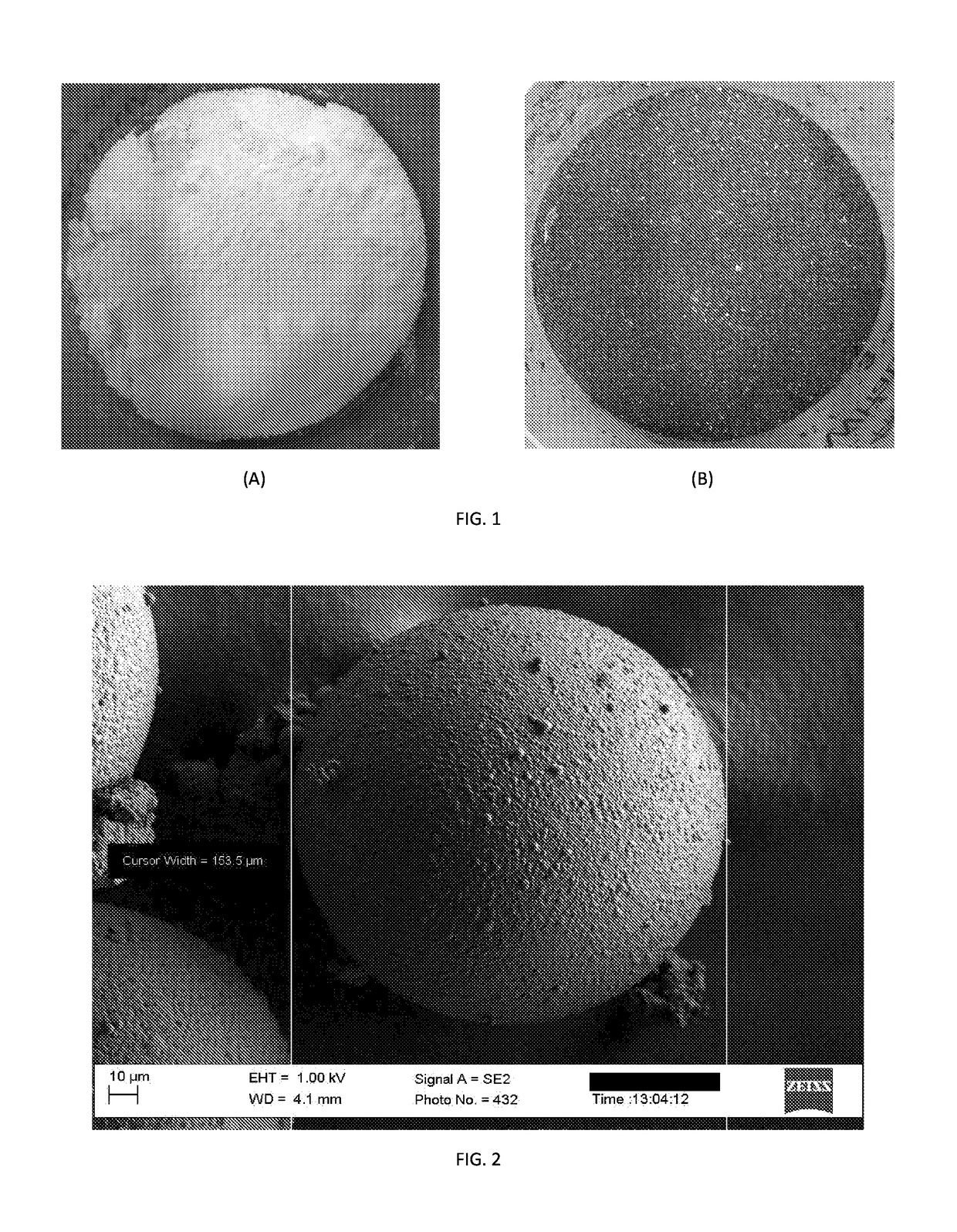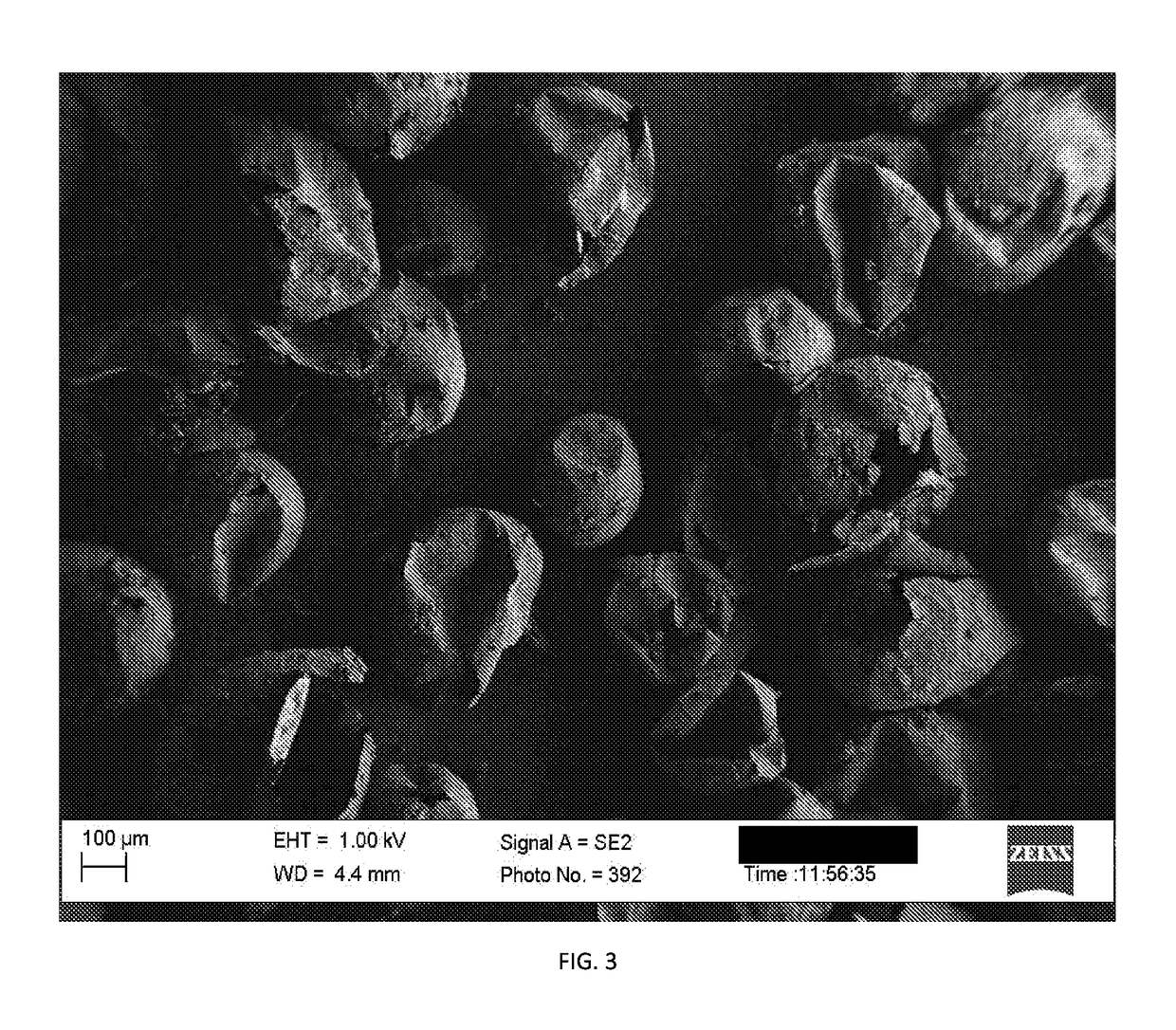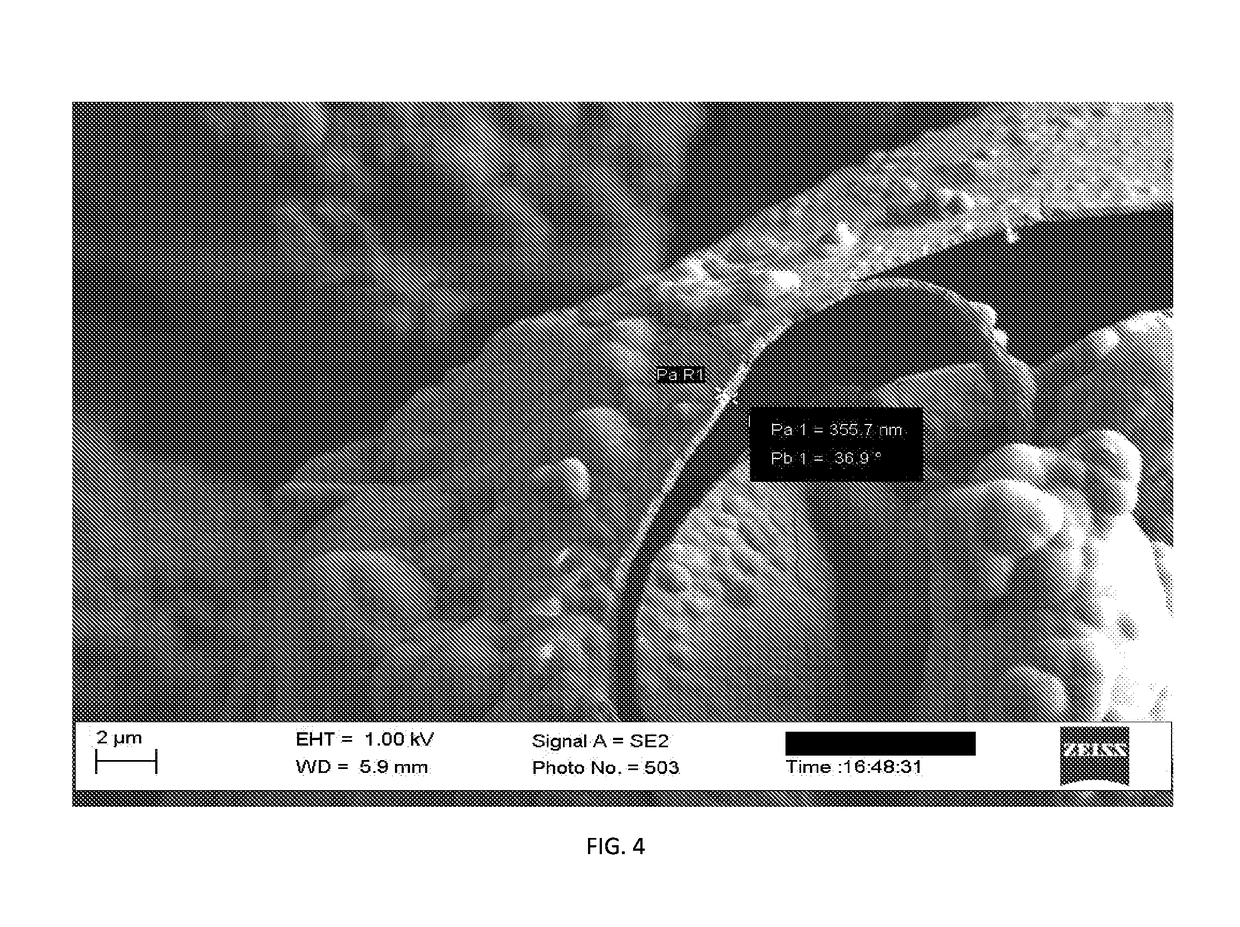Nanocomposite microcapsules for self-healing of composite articles
- Summary
- Abstract
- Description
- Claims
- Application Information
AI Technical Summary
Benefits of technology
Problems solved by technology
Method used
Image
Examples
example 1
Preparation of Nanoparticle-Induced Microcapsules
[0046]To manufacture the self-healing microcapsules, a beaker with 50 ml deionized water was placed on a hot plate. Then, 12.18 ml of 2.5 wt % aqueous solution of Ethylene Maleic Anhydride (EMA) was added to the beaker under high speed stirring between 800-1000 rpm. These stirring speeds have been chosen to accommodate the nanoparticles inside the microspheres. Simultaneously, 1.25g of urea, 0.125 g of ammonium chloride, and 0.125 g of resorcinol were added to this solution. The pH of the solution was raised from 3.12 to 3.50 by adding sodium hydroxide. A drop of 1 octanol was added to prevent surface bubbles. A slow stream of 14.75 g of dicyclopentadiene, which is the healing agent, was then added to this solution and was allowed to stabilize for 5 minutes. After adding dicyclopentadiene, 0.3 g of graphene nanoflakes (aka nanoparticles) was added to the solution. After stabilization, 3.1875 g of formaldehyde was added to the solution...
example 2
Manufacturing of Composite Panels
[0053]The microcapsules with graphene nanoparticles prepared in Example 1 above, were then mixed into an epoxy resin using ultrasonication and high speed stirring. The microcapsules with graphene nanoparticles were first cooled in an ice bath. A drying agent was added and the capsules were washed with a solvent to remove excess EMA surfactant. The solution was then centrifuged to separate the capsules, and then allowed to dry for 0-30 minutes. The microcapsules were then mixed into the epoxy matrix using high speed stirring and ultrasonication.
[0054]We have prepared composite panels using 2 wt %, 4 wt %, and 6 wt % of the nanoparticle-containing microcapsules in the epoxy resin. We have observed that the panel with 2 wt % of the nanoparticle-containing microcapsules increased the tensile strength by 31.51%. The panel with 4 wt % of nanoparticle-containing microcapsules in epoxy showed no improvement when compared to the baseline panel. The composite ...
PUM
| Property | Measurement | Unit |
|---|---|---|
| Fraction | aaaaa | aaaaa |
| Percent by mass | aaaaa | aaaaa |
| Percent by mass | aaaaa | aaaaa |
Abstract
Description
Claims
Application Information
 Login to View More
Login to View More - R&D Engineer
- R&D Manager
- IP Professional
- Industry Leading Data Capabilities
- Powerful AI technology
- Patent DNA Extraction
Browse by: Latest US Patents, China's latest patents, Technical Efficacy Thesaurus, Application Domain, Technology Topic, Popular Technical Reports.
© 2024 PatSnap. All rights reserved.Legal|Privacy policy|Modern Slavery Act Transparency Statement|Sitemap|About US| Contact US: help@patsnap.com










